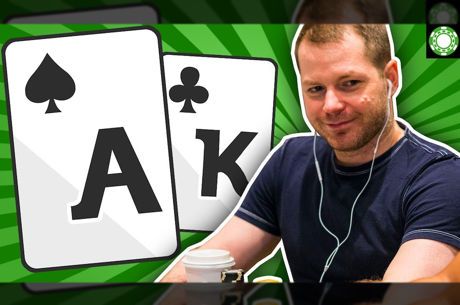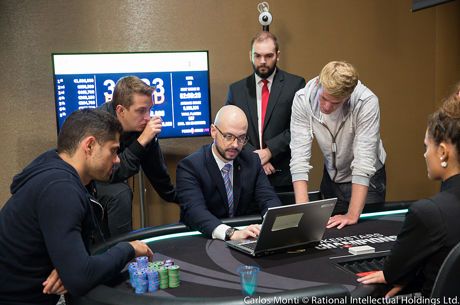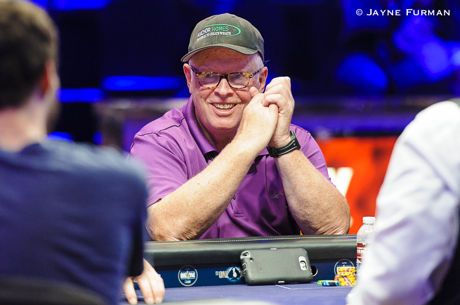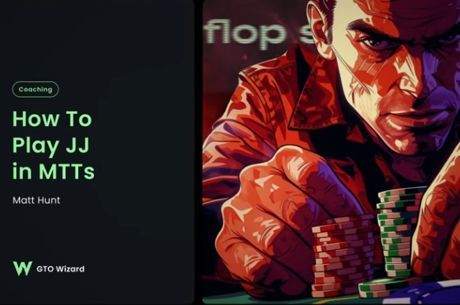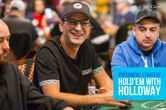Hand Analysis: When Bluffs Are in Short Supply
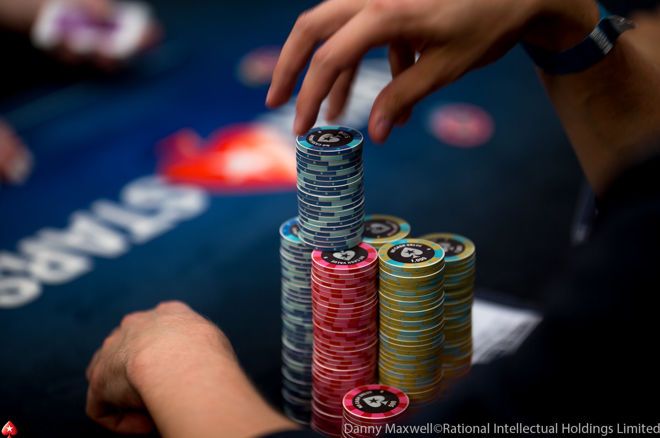
Let's say you're heads-up in a hand of no-limit hold'em, and the completed board is A-K-Q-J-T with no possible flush. What hands should you bluff, and what hands should you balance those bluffs with a value bet?
It's a trick question. In this case, you should always be betting with all your hands. The distinction between bluffing and value betting doesn't really apply, as you're necessarily playing the board. Bet and give your opponent the chance to make a mistake and fold.
There are some less obvious boards that will come up in hold'em where it is hard to identify what parts of your range should be bluffs. We like to think that because it is possible for you to have value hands, surely you must have some bluffs? But in practice there may be spots when this is hard to execute.
What follows is an example of just such a hand — one in which the action and board result in a situation in which bluffs appear to be in short supply.
Narrowing Ranges on the Flop and Turn
The game was six-handed, played online at a 100NL table ($0.50/$1). The two players in this hand were experienced regulars, each playing an effective stack size of 320 big blinds. Far into their respective sessions, a lot had been working for them and they were therefore both sporting healthy profits.
One of them was on the button, and when folded to he raised to $2.50. The small blind folded, then the other three-bet to $12 from the big blind and the button called. The A♣5♦6♠ flop then produced some very basic action — a continuation bet of $12 from the big blind and a call from the button.
Out of position with some 300 big blinds behind, one might expect the big blind to hesitate with some medium-strength hands, like J-J. However, because the button will probably give up here with some portion of his range — say small pairs and some J-9 suited type hands — the continuation bet cannot be too misplaced. One wonders if the big blind's betting range can take the heat of a raise, but on this occasion he didn't have to consider that question.
The turn was the A♠, bringing a spade flush draw and pairing the board. The chance of both players holding an ace drop precipitously on this card, though of course anyone experienced in hold'em knows it can still happen memorably often. The big blind decided to continue with a $29 bet into a pot of nearly $50.
We have much reason to suspect this bet represents a fairly strong range. It does not seem like some K-J bluff could bet like this, and since the button has plenty behind and the advantage of position, the bet just doesn't apply that much pressure. For these reasons, the big blind is likely to have some draws, including spades and 8-7, and some value hands, namely A-x.
The button called the turn bet, bringing the pot to a little less than $110.
River Hijinks
The river was the Q♣, making the completed board A♣5♦6♠A♠Q♣, and the big blind checked. Would he do so with A-K? It seems like that would leave value on the table and there are weaker hands with which to check and bluff catch.
The button decided to bet $38. This bet size makes sense. The button cannot have many bluffs, while his apparent range has an inordinate supply of trip aces in addition to full houses.
The big blind then responded with a check-raise to $113 total, leaving some $157 in the stacks behind.
With this action the big blind is representing a full house, because he would not do this for value with A-K or worse. How could he when the button's river-betting range includes so many A-Q, A-6, A-5, 6-6, and 5-5 combinations?
Nevertheless, the button moved all in... and was snap-called by the big blind who showed A♥Q♦ for a full house. What did the button have? Just 8♦7♦ for eight-high! His open-ended straight draw had missed, and his attempt to bluff his way to winning the pot had missed as well.
Finding Bluffs
Let's go back and try to find some bluffs for the button — at least ones better than with 8-7. It's not so simple.
First, the button needs hands that block the big blind's calling range. These must be hands that contain a 5, 6, Q, or best of all, an A.
But even among these hands finding a bluff isn't easy. Take K♠Q♠, or indeed any Q-x hand. A bare Q-x would just check behind to showdown. A similar argument can be made for 6-x and 5-x, though it is hard to see what 6-x hands the button can have on the river (5♠4♠ can call the turn, but 7♥6♥ not so easily).
However, if we consider the number of hands the big blind has on the river that want to jam — e.g., A-Q, A-6, maybe A-5 — we can see that a balanced range would also include a bluff or two. Does the button even value bet A♥2♥ on the river when checked to? To get called by what? And would that hand not do better as a bluff catcher when facing the check-raise?
These are difficult questions. We know for certain that 8-7 is not a good bluff-shove in this spot. Perhaps the best hands are the two combinations of 6-5-suited that were counterfeited on the turn. But we only get to bet the river with these if we did not give up on the turn (and maybe we should have).
Calling Off the Search
This may just be a spot where, in practice, the button has enough hands that can call (e.g., A-x, 6-6, 5-5), and enough hands that can shove for value (namely A-Q), but also potentially A-6 and A-5 to police the big blind from check-raising to any size.
That is to say, the button's overall river range here is not weak. So what if they are never bluffing with a river reraise-shove? $156 is not that much more given the check-raise was to $113. The big blind might not have any substantial way to take advantage of a lack of bluff-shoves.
If the small blind check-raises and then folds 5-5 (correctly) every now and then, it will represent the smallest of exploits. So we can conclude that the button reraise bluff-shoving the river here is ill-advised in general, specifically without blockers, and when the button's range is so value-heavy, it might be unnecessary. He is unlikely to be bluffed by the check-raise in the first place.

